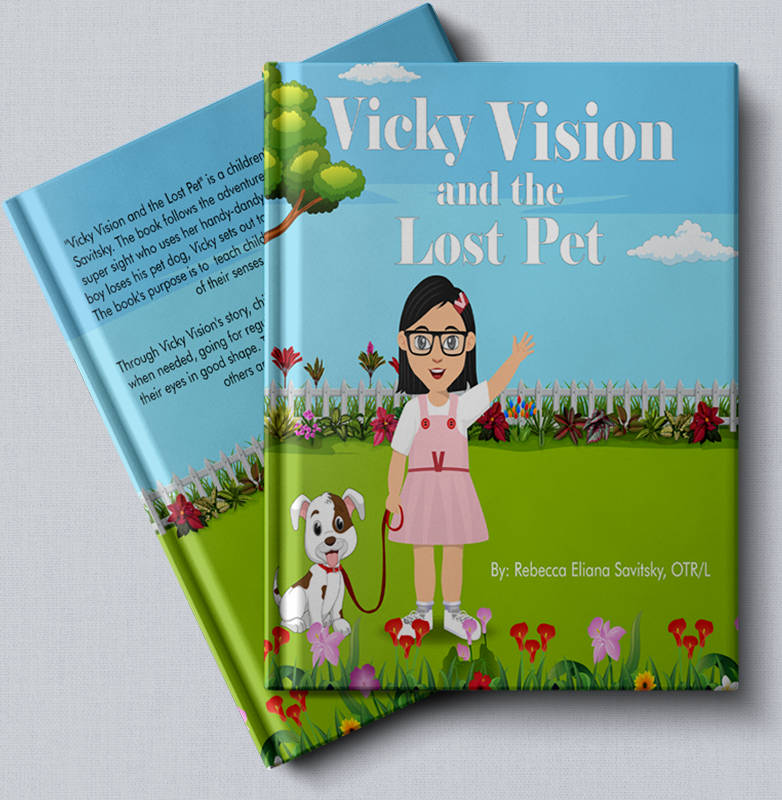Is Problem-Solving a Waste of Time?
Home > Blog

Children are constantly exposed to new information and complex situations; therefore, developing strong problem-solving skills is crucial.
These skills help them in day-to-day challenges and build their confidence and ability to handle more complex issues as they grow.
The book “Vicky Vision and the Lost Pet,” by Rebecca Eliana Savitsky is a wonderful example of how simple problem-solving can be a fun and educational adventure.
Through the character of Vicky Vision, children learn the importance of taking care of their senses, particularly their vision, and how these senses can be instrumental in solving problems.
Vicky Vision and the Importance of Senses
One of the key messages in “Vicky Vision and the Lost Pet” is the importance of taking care of our senses, especially our eyes. Vicky, the main character, is known for her sharp eyesight. She maintains it by wearing her glasses, going for regular eye checkups, and eating healthy foods like carrots and leafy greens.
Through her adventures, Vicky exemplifies the value of caring for our senses. This basic yet crucial lesson sets the stage for Vicky’s adventures in problem-solving.
Encouraging Observational Skills
The first step in solving any problem is to observe the situation carefully. In the story, Vicky uses her keen observation skills to search for the lost pet. She scans the neighborhood, taking note of every detail until she eventually spots the scared dog hiding behind a trash bin.
This part of the story teaches children the importance of paying attention to their surroundings and collecting information before jumping to conclusions.
Encouraging children to develop strong observational skills can be both fun and educational. Parents and teachers can create games where children are asked to find specific objects or differences in pictures. These activities can enhance their ability to notice small details, which is a crucial part of effective problem-solving.
Step-by-Step Approach to Problem-Solving
Another valuable lesson from the book is the step-by-step approach Vicky takes to solve the problem of the missing pet. Rather than rushing, she carefully thinks through each step.
First, she cleans her glasses to ensure her vision is crystal clear. Then, she systematically searches the neighborhood, considering logical places where the dog might be hiding. Finally, she approaches the scared dog gently, offering it a treat to gain its trust.
This methodical approach is something that children can easily learn and adopt. Teaching kids to break down problems into smaller, manageable steps can make challenging tasks feel less overwhelming.
Parents can help by guiding them through small problems in a structured way, reinforcing the idea that solving problems is a step-by-step process.
The Role of Kindness and Empathy
While Vicky’s sharp vision and problem-solving skills are central to the story, her kindness and empathy play an equally important role. When she finally finds the lost dog, she approaches it gently and offers it a treat, understanding that the dog is scared and needs to feel safe. This act of kindness not only helps her solve the problem but also ensures that the dog is calm and cooperative.
Teaching children the value of kindness and empathy is essential in problem-solving. Sometimes, the key to solving a problem lies in understanding others’ feelings and perspectives.
Encouraging children to think about how others might feel in a given situation can help them become more effective problem-solvers and compassionate individuals.
Making Learning Fun
One of the strengths of “Vicky Vision and the Lost Pet” is how it makes learning fun and accessible. The story is engaging and relatable, capturing children’s attention while imparting important lessons. Rebecca Eliana Savitsky’s approach ensures that children are more likely to engage with and remember the lessons they learn.
Parents and educators can take inspiration from this book by incorporating storytelling into their teaching methods. Stories capture children’s imagination and can make learning new skills feel like an adventure rather than a chore.
Whether it’s through books, games, or role-playing, using engaging methods to teach problem-solving can make a significant difference in children’s learning experience.
Final Words
“Vicky Vision and the Lost Pet” is a wonderful example of how problem-solving can be a fun and valuable learning adventure for children. Through Vicky’s journey, children learn the importance of taking care of their senses, developing strong observational skills, and approaching problems step-by-step. They also learn the value of kindness and empathy in solving problems.
Rebecca Eliana Savitsky’s book not only imparts important life lessons but also shows that learning can be enjoyable and engaging. By adopting similar approaches in real life, parents and educators can help children develop essential problem-solving skills that will serve them well throughout their lives.
Vicky Vision’s adventures also teach us that with the right approach and mindset, solving problems can be as exciting and rewarding as any adventure.
These lessons are not just valuable for children but serve as a reminder to all of us about the importance of observation, structured problem-solving, and empathy in our daily lives.